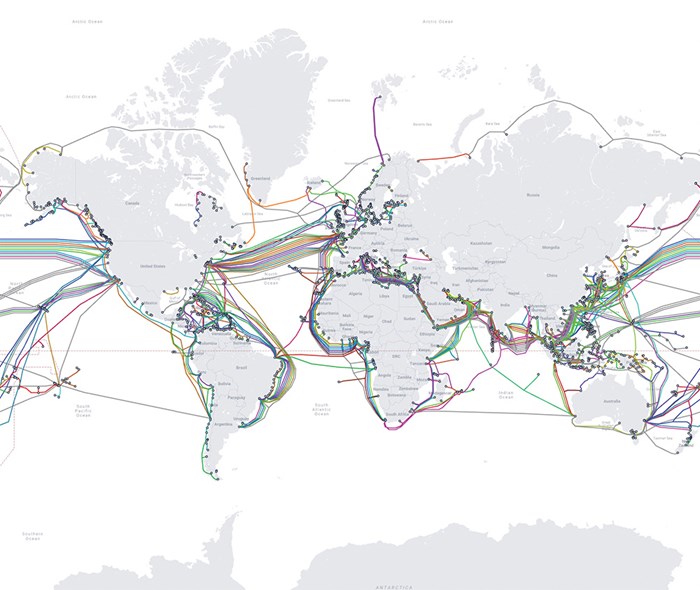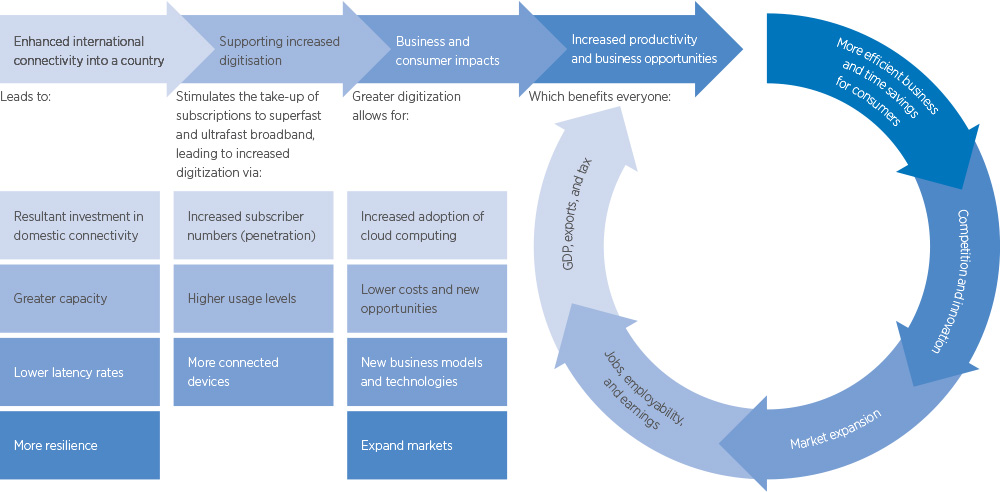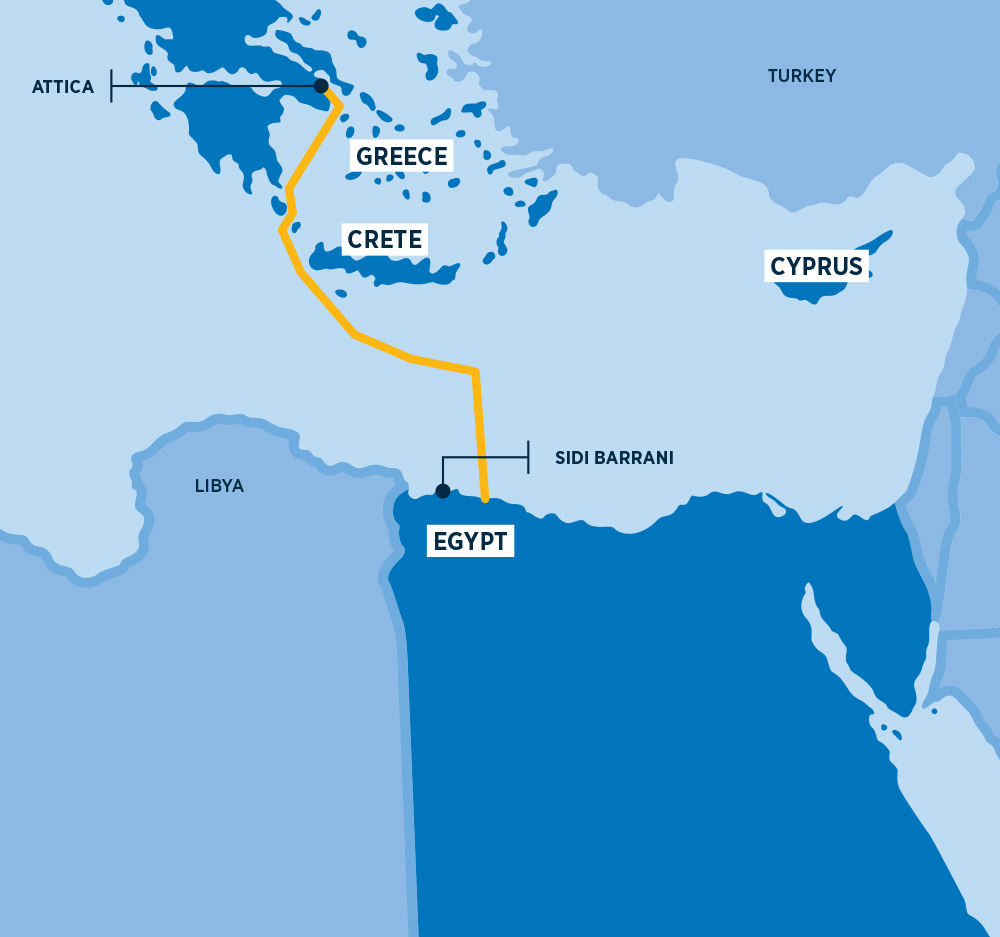Partnership. Expertise. Commitment.
Our industry experts provide insurance coverage, services and solutions tailored to meet your specific needs.

Undersea cables are hidden but increasingly vital enablers of the global economy that most people take for granted. Everyday business activities, such as sending emails, making video calls, transmitting data and transferring money, rely on the services provided by telecommunication cables that traverse the floors of the world's seas and oceans.
Along with gas pipelines and electricity connectors, subsea cables are a critical component of global infrastructure, powering global business and maintaining energy security.
Extensive development of new facilities is reinforcing the criticality of blue economy infrastructure, supporting the expansion of the digital economy and explosion of generative artificial intelligence (GenAI). Among other things, subsea telecommunication cables are responsible for transmitting 99% of intercontinental internet traffic.1
As business and society become ever more reliant on critical subsea infrastructure, it creates a growing source of vulnerability. Recent sabotage attempts on cables in the Red Sea and the Nord Stream gas pipeline explosion in Europe in 2022 are examples of an emerging geopolitical threat.
While it has yet to be formally announced, NATO is understood to be backing an initiative that will make it possible to reroute internet traffic from submarine cables to space in the event of an attack.2
A vast network of underwater infrastructure with thousands of miles of submarine cables, pipelines and other critical infrastructure is vital for the flow of data, energy and resources across country borders and between continents.
As well as channeling data, submarine cables enable the transmission of electricity generated from offshore wind farms, tidal energy facilities and other marine renewables, reducing reliance on fossil fuels and supporting the transition to net zero.
With an ever-increasing need for data storage and access and increasing pressures to move forward on the journey to net zero, the reliance on this critical yet vulnerable underwater infrastructure will continue to grow.
As the services the global digital economy provides continue to expand and interconnect, the infrastructure required to support this growth will also expand, contributing to economic development at multiple levels.
Economic Impact of Subsea Cables' International Connectivity

Source: Economic Impact of International Connectivity and Data Centre Development in Scotland, Deloitte, 21 Sept 2018.
Many projects are already underway to further increase the existing network of global submarine cables. The explosion of AI is one factor behind such investment: Large language models require substantial data capabilities to stay operational, and subsea cables offer high bandwidths (upwards of 300-400 terabytes per second), with low lag time.
Meanwhile, global tech giants are in a race to set up data centers across the globe to support the growth in cloud services and cater to the growing demand for edge computing, Internet of Things and GenAI.
While the concept of underwater data centers is still in its infancy, it's likely to gain traction as one way of meeting future needs while reducing carbon and water footprints and boosting security.3
All this demand means that businesses' profitability and capacity to innovate are going to become increasingly dependent on the effective operating of subsea infrastructure.

From an energy perspective, countries are transitioning away from fossil fuels, such as coal and gas, to renewable sources such as offshore wind and solar. The shift in energy mix brings more immediate challenges to the fore, including energy security and more volatile grid loads. This increases the importance of gas pipelines, subsea cables and interconnectors and their role in moving surplus gas and electricity from where it's produced to where it's needed.
The Greece-Egypt electrical interconnection (GREGY) is a 1,373-kilometer subsea electricity cable due to come online in 2029-2030 that will carry 3,000 megawatts of electricity, with the potential to power up to 450,000 households, from northern Egypt to Attica in Greece.4
Subsea cables and interconnectors: The statistics
The importance of undersea cables and other infrastructure in the operation of the global economy means that any disruption to this infrastructure could have serious ramifications in terms of business functionality and profits.
"The rapid expansion of global connectivity is driving the need for an ever-increasing network of subsea cables," noted Adam Carrier, head of Consulting at AnotherDay, a Gallagher company. "As our world becomes more interconnected and the demand for data continues to surge, a significant number of undersea cables are currently under development. In the places where the subsea cables are fewer in number, any damage to those cables can cause a massive setback to the country's economy."
There are three key potential threat sources to consider: accidental damage, natural hazards and sabotage/cyber-attack.
Where an item of subsea infrastructure is not backed up by alternative routings, damage to an internet or energy pipeline can cause substantial disruption, resulting in internet outages or even energy blackouts.
Consequently, areas of the world that rely on a single subsea cable or a handful of interconnectors are most vulnerable to disruption.
When fiber-optic cables are damaged:
In January 2022, an 827-kilometer fiber-optic cable connecting the South Pacific nation of Tonga to the rest of the world was damaged during the eruption of a volcano. It took a month to fully reconnect the island's population to the internet. 10
The blue economy continues to grow rapidly, fueled by the exponential growth of data in the digital age. Meanwhile, the transition to net zero and the ongoing drive to achieve energy security are driving the development of submarine energy cables.
Around the world, governments are taking steps to boost the resilience of blue economy infrastructure through policy, legislation and granting new powers to critical entities.
The European Commission's Critical Entities Resilience (CER) Directive, for instance, creates a framework to ensure vital infrastructure can prevent, resist, absorb and recover from disruptive events. It's focused on three key priority areas: preparedness, response and international cooperation.
Businesses should factor in damage to submarine cable networks when carrying out risk management scenario analysis and horizon scans, particularly if they have facilities in locations that are heavily reliant on just one or two subsea cables.
Risk mitigation techniques, such as diversifying internet routes and monitoring cable health, can reduce the impact of one cable going down and increase confidence across the value chain.
Submarine infrastructure is the hidden backbone of our global energy and communication systems, making it increasingly essential to ensure it is resilient to current and future threats.
A company's continued resiliency could depend on getting this right.
Published October 2024
1 "Damage to Undersea Cable Is Disrupting Internet Access Across Africa," The Economist, 21 May 2024.
2 "NATO Backs Effort to Reroute Internet to Space in Event of Subsea Attacks," Bloomberg, 8 Jul 2024.
3 Pallardy, Richard. "Is the Future of Data Centers Under the Sea?" Information Week, 28 Nov 2023.
4 "Undersea Power Cable to Connect Egypt to Europe via Greece," Africa News, 13 Aug 2024.
5 "Submarine Cables," The National Bureau of Asian Research, accessed 10 Sep 2024.
6 Minges, Michael. "Exploring the Relationship Between Broadband and Economic Growth," World Bank, Jan 2015. PDF file.
7 "Subsea Power Cables: The Future of Global Energy Transport," Markets Insider, 28 Dec 2023.
8 "SEA-ME-WE 3," Submarine Cable Networks, accessed 10 Sep 2024.
9 Monaghan, Sean, et al. "Red Sea Cable Damage Reveals Soft Underbelly of Global Economy," CSIS, 7 Mar 2024.
10 Needham, Kirsty. "Tonga Reconnects to World as Submarine Cable Restored After Tsunami," Reuters, 22 Feb 2022.